As a survivor of child sex trafficking, I often travel across the country to share my story as part of a larger effort to spread awareness about human trafficking and child exploitation. After sharing my testimony, I’m often asked for thoughts on ending the demand for commercial sex, as a way to deter sex trafficking and the commercial sexual exploitation of children (CSEC).
Several strategies have been posed to help end the demand for illegal commercial sex, including financial penalties, shame tactics, and diversion programs (e.g. “john schools”). For any person seeking commercial sex specifically with a child, that person is a pedophile; his or her behavior will not be corrected with a fine or john school. For those buyers who are intending to purchase illegal commercial sex from a “willing” adult, then a john school could certainly educate them about the existence of sex trafficking within illegal (and sometimes legal) commercial sex work, including incidences involving children.
It is not necessarily my mission to end the demand for legal commercial sex work; however, it is my personal and professional mission to end the widespread tolerance for sexual objectification of women and girls, especially in the media. I believe this will, in turn, help to reduce the prevalence of sexual exploitation, including sex trafficking and CSEC.
Every day we are surrounded by images of women sexualized and objectified in the media. Consistent exposure to such images can cause impressionable and misled girls to self-sexualize and self-objectify, and can cause both boys and girls to grow up viewing women as objects to critique and consume. Such a culture creates a tendency toward violence against women, which can manifest in ways ranging from degrading jokes about women in positions of power to excuses made for college students who gang rape an intoxicated and unconscious girl.
In my recently-published book, Walking Prey,I stress the need for media literacy education as a way to prevent sexual exploitation. Such education would help children and youth to deconstruct media (e.g. advertisements, magazines, movies, and music) and discuss messages within those media, including messages about different genders, races, and cultures.
An ideal media literacy program would include various perspectives on these topics from diverse populations. For example, many media messages attempt to portray an empowered woman, whether it’s for an advertisement, music video, or other media vehicle. But what does an empowered woman look like? One person may envision an empowered woman as one who is sexually open and aggressive, while another may view her as one who is academically and professionally successful. Another person may see an empowered woman as one who is chasing her dreams, regardless of the academic level, financial payoff, or sexual appeal; and yet another may see her as one who embraces her age and the wisdom gained from experience.
The goal of media literacy is to encourage children and youth to question (1) whose view or perspective they are actually seeing in a media image or message, (2) whether or not they agree with that message, and (3) the potential effects that message may have on individuals and societies.
How might such education prevent sexual exploitation, including sex trafficking and CSEC?
Youth and young adults who are forced or lured into commercial sex work have often already experienced sexual abuse and/or exploitation within their homes or communities. Before I met the man who trafficked me for commercial sex at age 14, I had been sexually exploited by older boys and young men in my community. As a preteen, I studied fashion magazines, movies, and music videos for clues about how to be pretty and popular. As a result, I was overwhelmingly exposed to images of sexually objectified women.
What I learned from these messages was that young women who were valued in society were sexy, desired by men, and eager to please men and that sex always felt good to these women. As I adopted these principles, I quickly learned that I did notenjoy sex, which made me think that something was physically wrong with me. What I did notlearn from these media messages was that empowered women not only had the choice to say no to sex but also practiced that choice whenever they felt uncomfortable.
In turn, I believe the older boys and men from my youth who sexually exploited intermediate and middle school-aged girls had also been exposed to these same media messages. I believe they simply didn’t see anything wrong with treating girls as sexual objects without feelings, concerns, or desires of their own. Had I been exposed to media literacy in elementary and middle school, I might have recognized that I was seeing only one perspective on female sexuality and value; and that this message, without the balance of other perspectives, was potentially destructive. The same goes for the boys and young men in my community – had they been exposed to media literacy, perhaps they would have recognized, and even rejected, messages that encouraged objectification and exploitation of women.
I ultimately cooperated with the man who forced me into prostitution because I didn’t understand my personal rights or value as a young woman. In fact, I began to feel empowered by prostitution because I was then getting paid to do something that I hated but thought was a requisite of young women. Many youth and young adults in illegal (or legal) commercial sex work may harbor these same notions.
So, what are my thoughts on ending the demand for commercial sex? My thoughts are to instead focus on media literacy as a tool to teach youth to think critically. Such education can follow youth into adulthood and help them to identify negative messages and situations, especially those that perpetuate violence against others. Media literacy is one of many vital components to a well-rounded prevention program to educate youth against sexual exploitation. Change will begin with education, and a movement will flourish with inspired young leaders.






